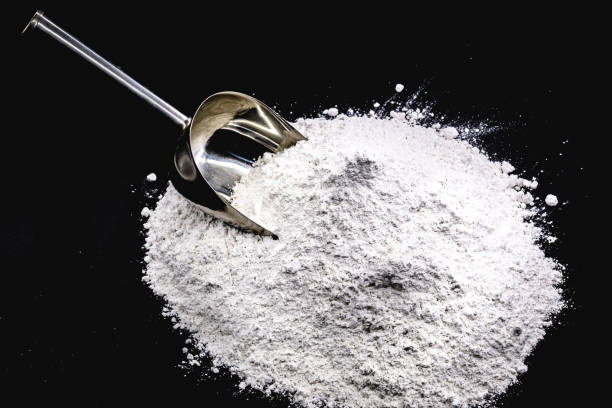Blog
Calcium Carbonate Crystals – Everything You Need to Know
Calcium carbonate crystals are a fascinating natural compound that plays a critical role in various applications, from biological systems to industrial processes. Whether it’s found in nature as limestone or used in medicine to treat certain conditions, calcium carbonate crystals are ubiquitous and highly versatile. In this article, we will explore what calcium carbonate crystals are, how they form, and their numerous uses.
What Are Calcium Carbonate Crystals?
Calcium carbonate crystals are solid, inorganic compounds composed of calcium, carbon, and oxygen atoms. Crystals of calcium carbonate naturally occur in various forms, such as calcite, aragonite, and vaterite. You might recognize calcium carbonate as the primary component of limestone, marble, and chalk, which commonly appear in nature.
In living organisms, calcium carbonate crystals are essential for the formation of structures like bones and shells. In industry, they serve a variety of purposes, ranging from use in construction materials to applications in the food and pharmaceutical sectors.

How Do Calcium Carbonate Crystals Form?
Calcium carbonate crystals typically form through a natural process known as precipitation. This occurs when calcium ions (Ca²⁺) combine with carbonate ions (CO₃²⁻) in water. When conditions are right, such as when water is saturated with calcium and carbonate, these ions crystallize into solid calcium carbonate.
In geological environments, calcium carbonate form over millions of years, resulting in the creation of limestone and marble. These materials are mined and used in a variety of industries. Calcium carbonate can also precipitate in biological organisms, playing a key role in the formation of shells in marine life and bones in vertebrates.
Different Forms of Calcium Carbonate Crystals
There are three main forms of calcium carbonate , each with unique properties:
1. Calcite
It is the most stable and commonly found form of calcium carbonate. It forms a key component of limestone and marble, featuring a hexagonal crystal structure. Industries use calcite extensively in construction, agriculture, and the production of glass and ceramics.
2. Aragonite
Aragonite has a different crystal structure compared to calcite and is typically found in marine environments. Coral reefs and shellfish utilize aragonite to create their exoskeletons. Although aragonite is less stable than calcite, it is valuable in marine biology and environmental studies.
3. Vaterite
Vaterite is the least stable form of calcium carbonate and is less commonly found in nature. It tends to convert into calcite or aragonite over time.
Uses of Calcium Carbonate Crystals
Calcium carbonate are used in numerous industries due to their versatility. Here are some key applications:
1. Construction
Calcium carbonate is a primary ingredient in construction materials such as cement, concrete, and lime. Its crystal structure provides stability and strength to these materials.
2. Agriculture
In agriculture, calcium carbonate is used as a soil conditioner to neutralize acidic soils. This helps to improve crop yield by balancing the soil pH and providing essential calcium for plant growth.
3. Medicine
Many pharmaceutical products, including antacids and calcium supplements, contain calcium carbonate. These products help neutralize stomach acid and provide the necessary calcium intake for people suffering from conditions like osteoporosis.
4. Environmental Applications
Calcium carbonate is used to treat water and waste by neutralizing acidic conditions. It plays a crucial role in reducing pollution by trapping harmful gases such as sulfur dioxide in flue gas desulfurization processes.
Calcium Carbonate Crystals in Everyday Life
You may not realize it, but calcium carbonate are present in many everyday products. From the toothpaste you use to the paper you write on, calcium carbonate plays a critical role. It’s also a common filler material in plastics, rubber, and paints, improving their durability and appearance.
The Environmental Impact of Calcium Carbonate Crystals
While calcium carbonate is widely used across multiple industries, it’s important to consider its environmental impact. Mining limestone and marble can lead to habitat destruction, and the processing of calcium carbonate into usable forms produces carbon dioxide (CO₂) emissions. However, many industries are finding ways to reduce the carbon footprint associated with calcium carbonate production by implementing sustainable practices.
How to Choose the Right Calcium Carbonate for Your Needs
Choosing the right form of calcium carbonate depends on the intended use. Whether you’re in construction, agriculture, or medicine, understanding the specific properties of calcite, aragonite, or vaterite will ensure you select the most effective type.
